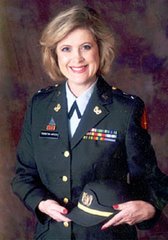TAKING A SECOND LOOK
And ADVICE FOR NEWBIE WRITERS FROM A GUEST BLOGGER
I pulled out a couple of "trunk novels" – you know, those things you wrote way-back-when that didn't go anywhere, usually because you didn't know how to write very well at that time – and took a second look at them. Yes, one is so painfully bad it cannot be salvaged, although I got a kick out of re-reading it. The other one has a nifty plot, but I think I'm going to let my Main Character continue to sleep in perpetuity in the trunk and switch her out for one I like a whole lot better. This might be the revision it needs to get going. Or it may just be more writing practice for me. Either way, I intend to have some fun with it.
The Effective Writer
Here is a piece written by BILL THORNTON. He sent this to me in a letter – as a letter, actually - and I got his permission to post it here for you. He calls it "The Effective Writer" but I want to call it "The Character Plays the Part."
The Effective Writer
In order to create a believable scene, one must take the reader to that specific place. The reader must sense the scene, its particular environment, its smells, flavors, sounds and colors, its season and atmosphere. Similarly, the reader must feel the raw emotions of the characters, the urgency of the moment, and the emotional or political climate of the particular scene. He must, in a very real sense, live in the scene if not as a player, at least as a present observing bystander.
Descriptions of the scene must be rich and vibrant, colorful and dramatic. The characters may even be a bit more than real in their ability to express their particular part in the story line. Given the need for realism, muted, subdued even melancholy effects are critical to tapping into the reader’s emotions. These are real sensations that real people feel and sense, and it’s that sensitivity and realism that make a scene believable.
A writer may express deeply committed love, raging anger, explosive happiness, or crushing emotional pain, any number of real human emotions complete with their character’s physical reactions and responses.
Anything less is not honest writing, and conveys less than the actual scene.
While the writer may have personally known these feelings and sensations, it’s his ability to convey accurately those very awareness’s to the believing reader that makes the scene work.
“Dry wiregrass rustled in the early afternoon breeze, buzzing cicadas and the rich scent of cinnamon and fresh peaches drifted over the well worn path to the creek just at the tree line.” Well, what color is the wiregrass? Describe “rustled”. Was it a light breeze, or a near wind? Were the cicadas bussing loudly, or were they a distant background effect? What kind of peaches were they? Was it a dirt path? Did it run through heady scent of lush green freshly mown lawn, or were they long creeping tentacles of aged and unkempt crabgrass? Was the creek silent and melancholy, rich with the pain of the widowed fly fisherman, or brightly babbling and filled with the memories of laughing children? Was that just a tree line, or was it a stand of rustling, quaking aspens, their brilliant trunks contrasting with deep, thick underbrush or heavy clumps of wayward field grasses?
Be in the scene to make it believable.
The writer need not actually be experiencing the emotions he conveys, though experience is the “real” of realism. It’s often said that the successful writer writes about things he knows. One cannot take the reader to rural Southern Georgia in the 1920’s unless he has been there and walked those well worn paths to the creeks, smelled that peach pie cooling on the window sill on a heavy, humid southern afternoon in the dog days of summer. He may not have actually been at the scene in those literal times, but that’s the stuff of research, and interviews, and imagination combined. Atmosphere is the stuff of creating realism. Raw emotion, drama and contrast are the stuff of the writer’s skills and talent.
When a scene is created that conveys these senses, does it leave the reader feeling angry, hurt, elated, melancholy, inspired? These are the meat of the writer’s fare. Listen to his footsteps echo, fading down a long, wet alley amongst towering brick walls rich with the sounds of unnamed apartment dwellers in the bowels of a rotting city, rife with tenements, screaming windows into the lives of those imprisoned in the confines of their own desperation. The stench of leaking sewer lines, greasy Chinese food, and diesel hangs heavy in the late afternoon stillness of a filthy, cracked and weathered doorway, its once bright and vibrant red now grease and dirt colored, thick with years of neglect and apathy.
Does the writer take you into his world to bring you into the scene and make you part of it, or are you just reading words on a printed page? The flatness of the print on the flat page is often the stuff of boredom. Living words and emotions are the stuff of writing.
Did I give you my anger, or the anger of the character? How different are they? It’s the character that plays the part. An angry scene does not reflect an angry writer. Nor does a happy holiday scene, filled with laughter, reflect a happy writer.
PAINTING STUFF – IN FRONT OF THE REAL THING
I'm continuing to work on my painting for the January exhibition jointly sponsored by the da Art Center and the Pomona College Museum of Art (pictured left), IN FRONT OF THE REAL THING. Here are a few pictures of the progress. I'm mixing up the reds now, and trying to get the balances right. I hope I'll be able to fill in the central pupate form by next week if the weather stays sunny and my oils dry properly.
The painting is based on a 14th Century Italian Madonna and a 1971 abstract by Sam Francis. A few of the titles suggested to me (yes, my friends are all comedians) are: "Franciscan Madonna" "Atomic Mother and Child" and my favorite "CSI: Madonna."
Needless to mention - it ain't done yet!
THREE BEAUTIFUL THINGS
My old kitty Jeeves. My sweet Jeebee is still hanging in there, although thin and elderly (13-16 years old) he is eating well and active. And he doesn't take any sass from the younger cats & the 2 doggies.
Having lunch with friend Leslie Cole and then looking at mid-mod property in Claremont. It's no coincidence that four of my friends are in real estate. But lunch with Leslie always includes more: this time we talked about crock-pot recipes, cat recues and travel. I swear, we sound like old ladies in print, but the conversation was not of the sweet, cozy type – more of the speculative, adventurous type.
My sister-in-law Pris's 70th Birthday Party – what a blowout bash! With my husband's whole entire extended family there (except brother Charlie & his wife Joyce who live in Australia) and everyone Pris knows, it was an exceptional dinner for about a hundred people at Kellogg West at Cal Poly. A slideshow of Pris during her early years (like in a baby carriage!) and other family members (like my DH as a sullen-looking but still very smokin' 15 year old) was the highlight of the party. The cake was a work of art from Some Crust in Claremont, but looked like Duff and the folks at Charm City had made it.
Pris had a good time – everybody had a good time! – and the DJ was great, too. Many thanks to Pris's sons, Derek and Kyre, for putting on this terrific bash.
(That's DH's brother Art & sister Sandra - Pris was married to Art)
Be careful out there

































